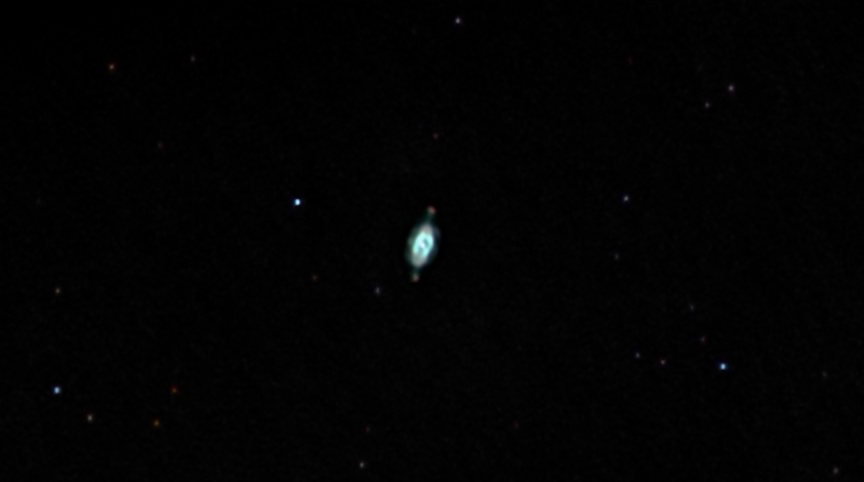
This planetary nebula is known as the Saturn Nebula. This irregular nebula gets its name from the two extended portions that remind you of the rings of Saturn, especially when the rings of Saturn are viewed almost edge-on. This is a relatively bright object. The nebula shines at magnitude 8, and has a high surface brightness. At low magnifications the object is stellar in appearance.
Planetary nebulae are formed by an expanding shell of gas thrown off explosively by a dying star. The gasses forming the nebula fluoresce as a result of ultraviolet radiation from the central star. Planetary nebulae can take many different forms. For example, compare the Saturn Nebula shown here to the Owl Nebula, the Dumbell Nebula, the Ring Nebula, the Bug Nebula, the Eskimo Nebula, the Blue Snowball Nebula, and Abell 43. The different shapes and forms are believed to be a result of our viewing angle, and whether the star throwing off the gas has one or more companions.
This is an RGB composite CCD image taken with an SBIG ST-8XE CCD at prime focus on a Takahashi Mewlon 210 operating at f11.5. The images were acquired using MaxIm DL/CCD and the Astronomers Control Panel software. This image was taken from my back yard in Scottsdale, Arizona.
NGC 7009
Constellation: Aquarius
RA: 21h 04m 20.3s Dec: -11d 21' 24"
May 30, June 1 & 3, 2005
Image by Sid Leach
Scottsdale, Arizona
Recent Images.
Complete list of images.
Description of equipment used to acquire images.
Home
Feedback and comments should go to Sid